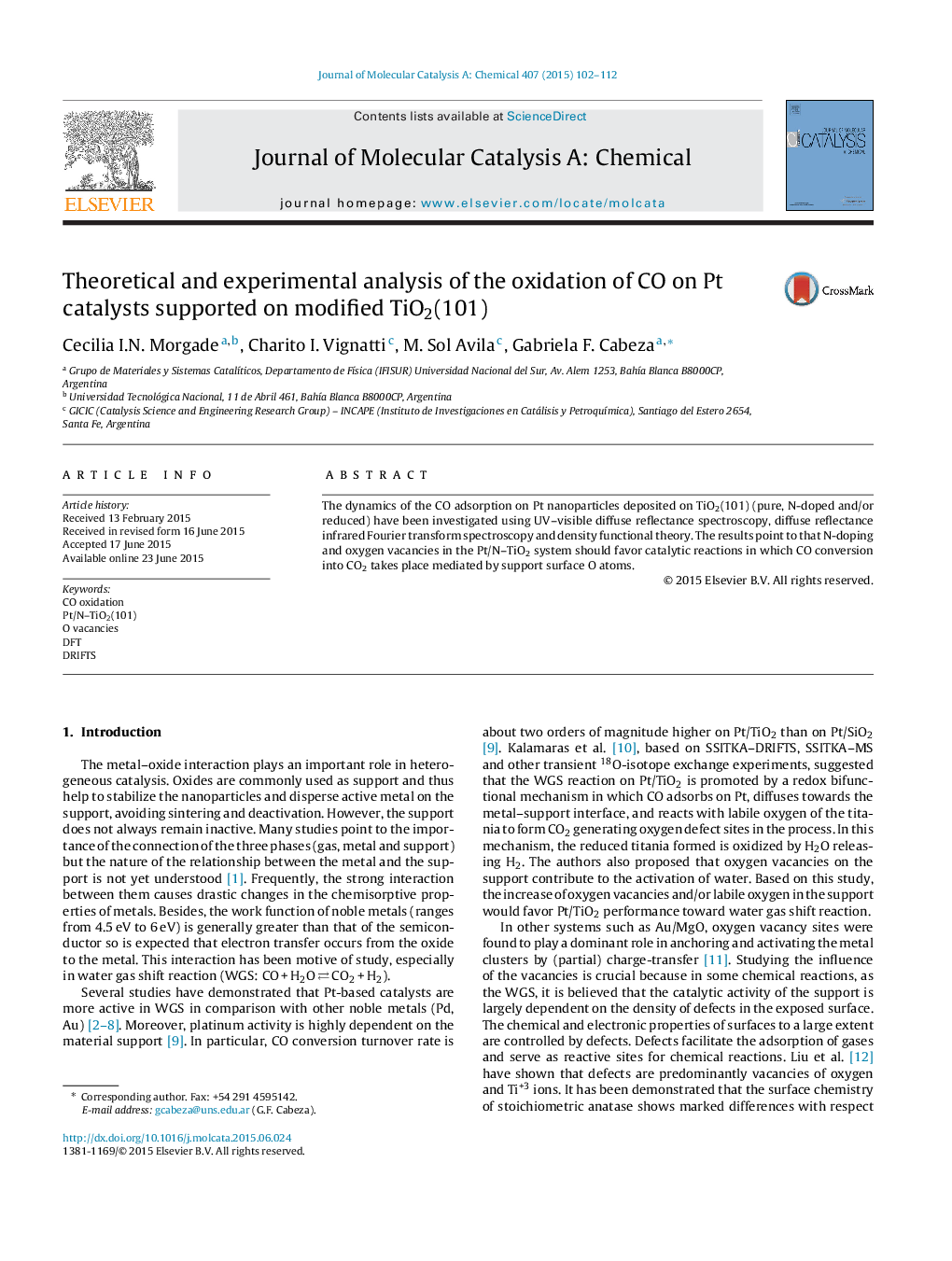| کد مقاله | کد نشریه | سال انتشار | مقاله انگلیسی | نسخه تمام متن |
|---|---|---|---|---|
| 64992 | 48377 | 2015 | 11 صفحه PDF | دانلود رایگان |

• CO adsorption is much stronger on the Pt/N–TiO2(101) doped catalyst.
• O vacancies in TiO2(101) are stabilized when coexisting with N as a dopant.
• CO conversion into CO2 by oxygen atoms of support surface is enhanced in Pt/N–TiO2.
• Pt/N–TiO2−x catalyst has the weakest PtC bond.
The dynamics of the CO adsorption on Pt nanoparticles deposited on TiO2(101) (pure, N-doped and/or reduced) have been investigated using UV–visible diffuse reflectance spectroscopy, diffuse reflectance infrared Fourier transform spectroscopy and density functional theory. The results point to that N-doping and oxygen vacancies in the Pt/N–TiO2 system should favor catalytic reactions in which CO conversion into CO2 takes place mediated by support surface O atoms.
Figure optionsDownload high-quality image (135 K)Download as PowerPoint slide
Journal: Journal of Molecular Catalysis A: Chemical - Volume 407, October 2015, Pages 102–112